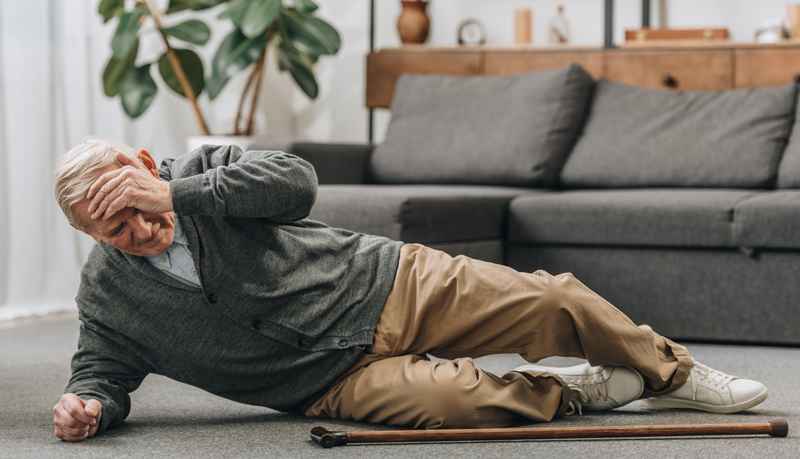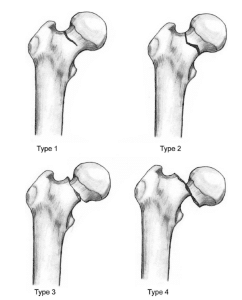What is a Neck of Femur (NOF) fracture? Causes & consequences of NOF fractures
A neck of femur (NOF) fracture, also known as a hip fracture, is a serious injury that occurs when the neck of the femur bone breaks. Hip fractures are very common, especially in the elderly, and can severely impact a person’s quality of life.
In this article, we will look at what a NOF fracture is, the consequences of NOF fractures, and why falls are one of the most common causes.


What is a NOF fracture?
The femur bone, or thighbone, is the longest and strongest bone in the human body, and the narrow section of the femur that connects the shaft and the head is called the neck.
A NOF fracture is an injury that occurs when the neck of the femur fractures or breaks.
As shown in the image on the right, NOF fractures can vary from a slight fracture, through to a complete break and detachment of the neck of the femur.
What causes NOF fractures?
NOF fractures most commonly occur in elderly patients as a result of a fall.
As we age, bones tend to become thinner and weaker due to osteoporosis, and this loss of bone density makes the elderly much more susceptible to fracturing their hip, even with a minor fall.
A study in 1999 of 206 patients with hip fractures revealed that in 98% of the patients, the fracture was a result of a fall1.
Consequences of NOF fractures
With proper treatment and surgery within 48 hours of the injury, most patients regain good functionality of the hip joint. However, recovery after a hip fracture takes many months and some may require long-term care.
There is also a potential for serious complications occurring after a NOF fracture, and subsequently, the mortality rate is quite high. According to a 2019 study in Acta Orthopaedica, the one-year mortality after a hip fracture is 21% for those whose fracture is surgically repaired. If the fracture is not repaired, the one-year mortality is about 70%.
This means that, with optimal treatment, roughly four out of five people will survive for at least the first year following a hip fracture.
Some other consequences of NOF fractures include:
- Pain and immobility: NOF fractures are often extremely painful and can severely limit the person’s ability to move or bear weight on the affected leg. This immobility can lead to muscle atrophy and further complications.
- Decreased independence: The immobility caused by the fracture and subsequent surgery can lead to a significant loss of independence. Many elderly people require assistance with activities of daily living and may need to move to a care home or require in-home care.
- Increased risk of other health issues: Immobility resulting from the fracture can lead to secondary health issues like pressure ulcers (bedsores), pneumonia, urinary tract infections, and deep vein thrombosis (blood clots).
Citations
[1] https://pubmed.ncbi.nlm.nih.gov/10441647/
Related articles
What Causes Falls in the Elderly? Common Causes and 3 Solutions to Help Prevent Falls
What Are The Consequences Of Falls In The Elderly? Physical, Psychological, and Social Impacts
Where Do Falls In The Elderly Occur The Most?
Get in touch
Got a question or want to send us a message? Let’s talk.